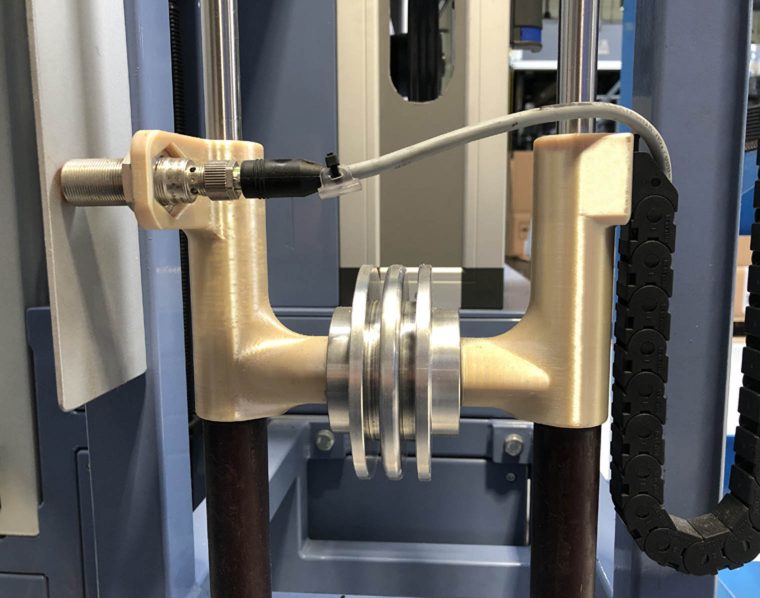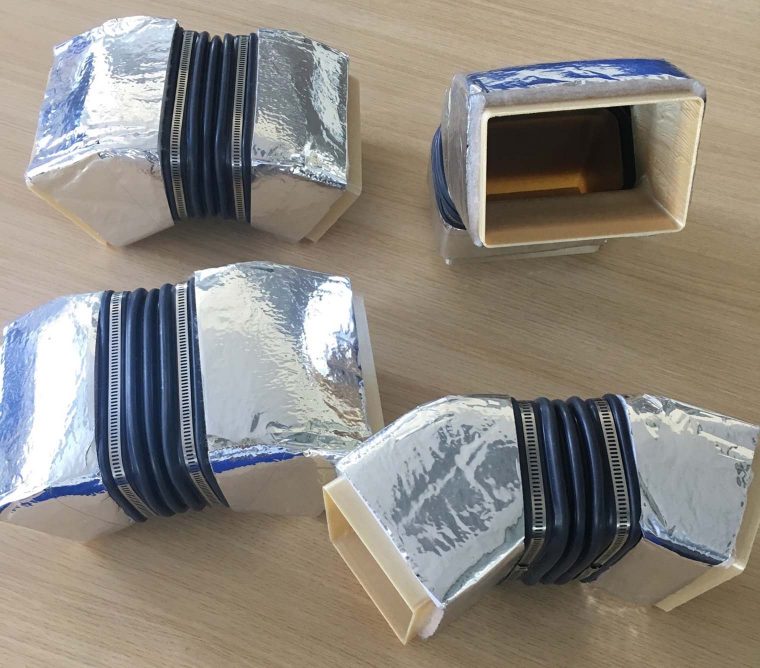Rustin, a French rubber sealing firm best known for inventing the cycle tyre puncture patch, recently invested in two new Stratasys FDM 3D printers – the Fortus 450mc and F370.
With the addition of additive manufacturing into its workflow, the company cites significant time and cost savings for both prototyping and production applications when compared to exclusively traditional manufacturing.
Louis Rustin, Managing Director at Rustin, said: “It’s about time, operational speed and production capabilities, and with Stratasys FDM additive manufacturing we have more of each than we would with traditional machining methods. The result of this efficiency means that our operators are effectively given more time to devote to applications like molds or dies in which traditional manufacturing is still deployed, but are nevertheless more labour intensive.”
“With Stratasys FDM additive manufacturing, we can produce any tool design we want – even complex items – in just one step. The technology removes barriers for us.”
Stratasys’ 450mc and F370
Rustin’s investment in the two 3D printers has reportedly reduced the company’s average cost of tooling and part production by 50%. Using FDM technology has also decreased the firm’s lead times from around six weeks to just a few days.
The F370, which is primarily used for functional prototyping, features a build volume of 356 x 254 x 356 mm and is compatible with ABS, PLA, ASA, and PC. On the other hand, Rustin’s in-house team relies on the Fortus 450mc for the majority of its additive manufacturing end-use production projects. The system features a build volume of 406 x 355 x 406mm and is capable of extruding high-temperature, chemically-resistant polymers such as PEKK and ULTEM.
Rustin said leveraging the Fortus 450mc has led to less machine downtime and less manual labor which means the company’s workforce can be put to use elsewhere. He added: “The push-and-play element of the technology means that once a print job has been set to run, the operator can do something else. That’s a hidden, but also very obvious advantage that is extremely important to us as a company as it increases our overall performance, reactiveness and ability to serve our customers more quickly.”

Rustin to the rescue
Previously, Rustin helped produce emergency parts when a production line failed at a facility owned by rolling stock OEM Alstom. The company sent an emergency parts request to Rustin after the failure of an engine air duct and Rustin was able to bring the production line back to life within four days. To fix the issue, Rustin used its Fortus 450mc to create a silicon sleeve with 3D printed end connectors and thermal isolation material to replace the non-functioning duct.
Guillaume Rigaud, a CAD designer at Rustin, said: “The flexibility of additive manufacturing allows us to blend materials according to requirements, but it’s definitely fair to say that, due to the complexity of certain components, much of what we produce with the technology wouldn’t be possible through other more basic machining methods. Even if we could do so, there would typically be several stages to go through before we had a finished part or tool.”

Applications of Stratasys’ FDM printers in other companies
Just last month, a Stratasys Fortus 450mc FDM 3D printer was installed by automotive manufacturer Continental AG – also famous for its tires. The printer was installed at its Additive Design and Manufacturing (ADaM) Competence Center in Germany and is being used to produce functional prototypes, jigs, and fixtures for Continental’s production line.
Stratasys received its largest order to date after aerospace firm AM Craft purchased four of its F900 3D printers in August 2020, expanding AM Craft’s existing portfolio of four Fortus F450mc 3D printers. Collectively the aerospace company will now operate with eight FDM machines primarily for non-critical cabin customization applications. Elsewhere, Multinational aerospace company BAE Systems also announced the installation of its fourth Stratasys F900 system as part of its ‘Factory of the Future’ initiative to drive down production costs.
Check us out on Twitter and Facebook for more updates! Don’t forget to subscribe to the 3D Printing Industry newsletter to keep up-to-date with the latest 3D printing news.
Are you looking for a job in the additive manufacturing industry? Visit 3D Printing Jobs for a selection of roles in the additive manufacturing industry.
Featured image shows the Stratasys Fortus 450mc being used to create internal production line tooling.


